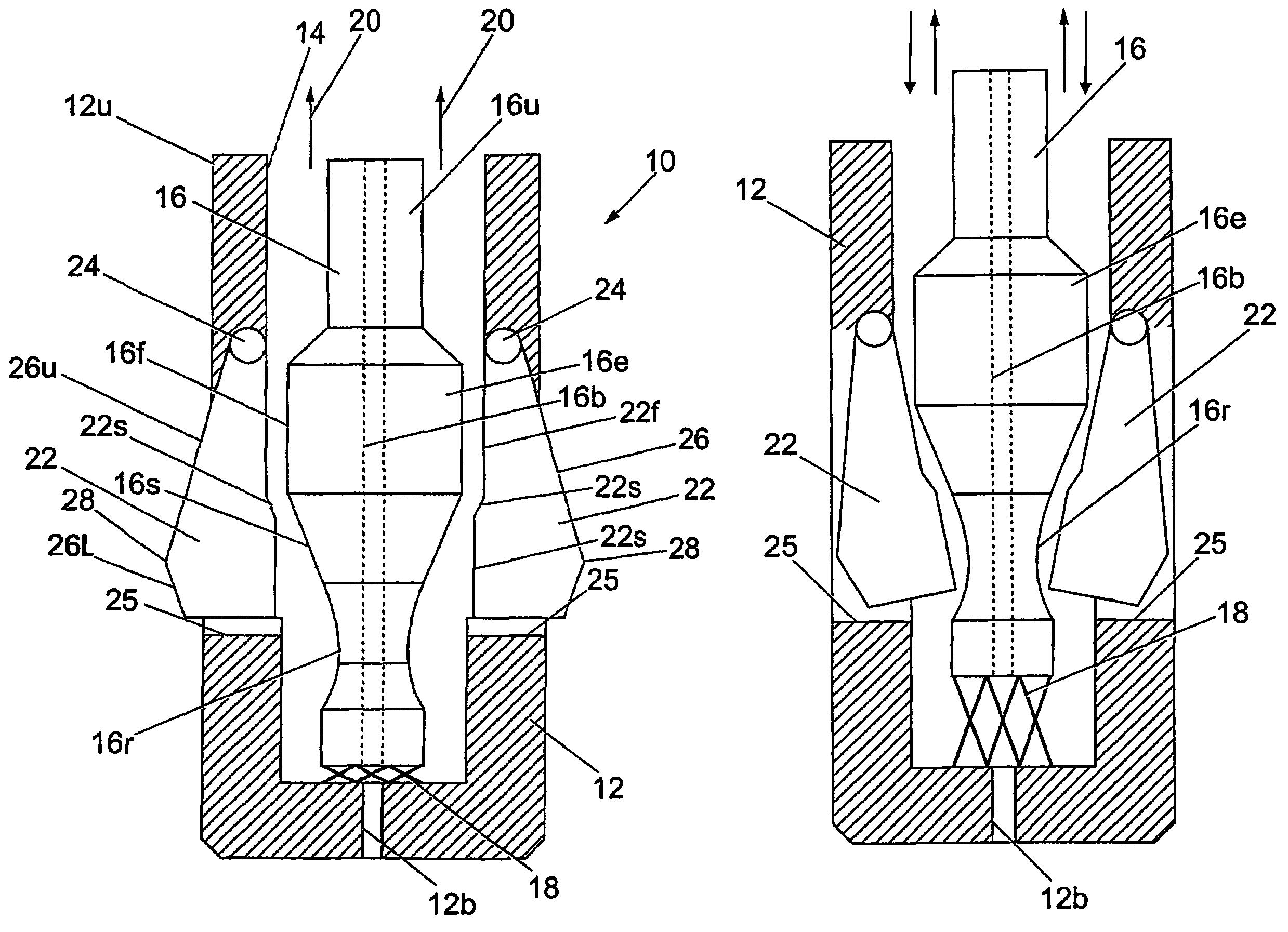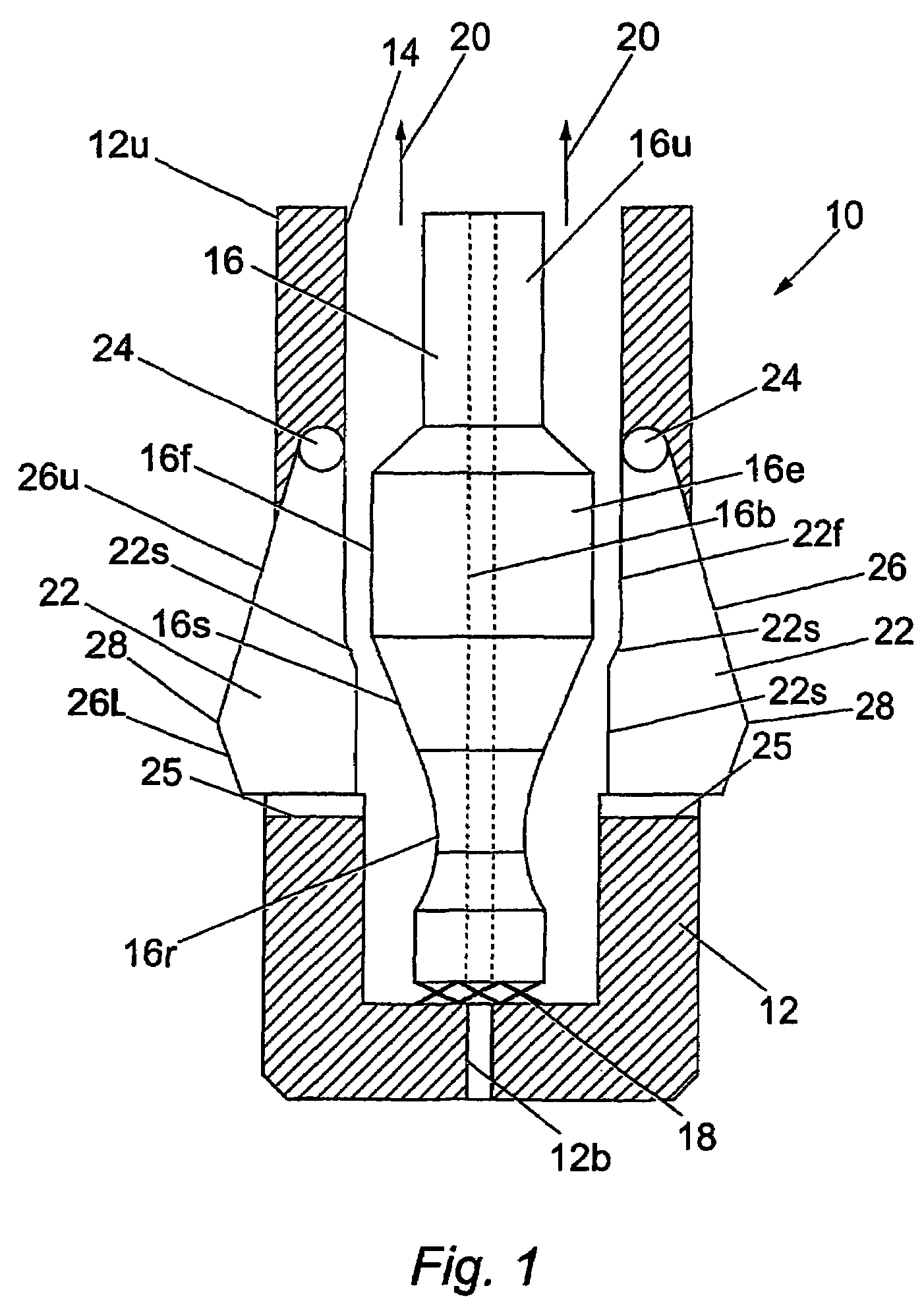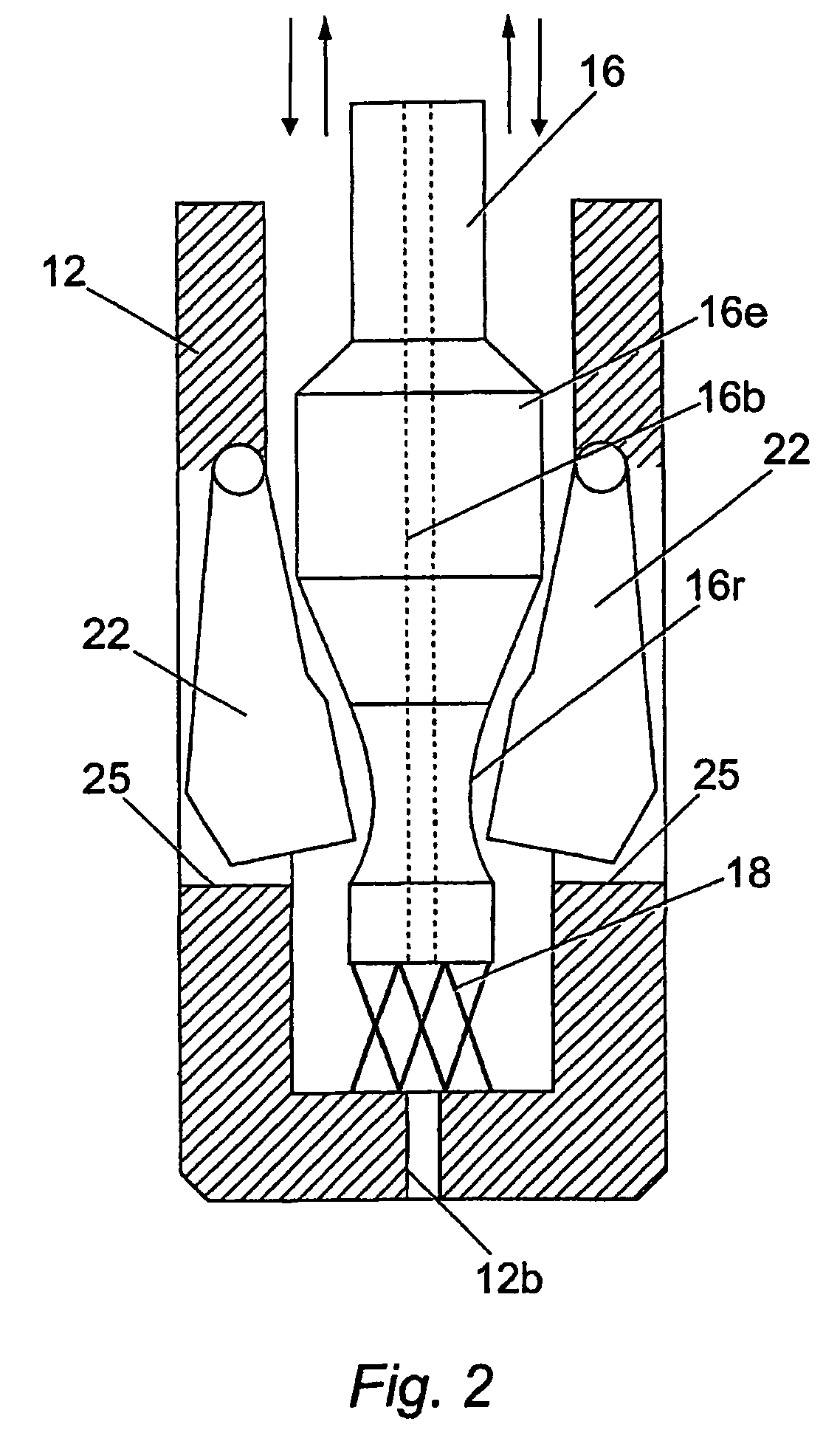Expander device
a technology of extruder and rotor, which is applied in the direction of fluid removal, earthwork drilling and mining, and wellbore/well accessories, etc., can solve the problems of inability to complete the expansion process, difficulty in fishing operations, and stuck, and achieve the effect of overturning the biasing for
- Summary
- Abstract
- Description
- Claims
- Application Information
AI Technical Summary
Benefits of technology
Problems solved by technology
Method used
Image
Examples
Embodiment Construction
[0054]Referring to the drawings, FIG. 1 shows a part cross-sectional elevation of an exemplary embodiment of apparatus, generally designated 10, for expanding an expandable member such as liners, casings, drill pipe and other such downhole tubulars. It should be noted that the terms “upper” and “lower” will be used herein with reference to the orientation of the apparatus 10 as shown in FIG. 1, but this is arbitrary.
[0055]The expandable member may comprise any tubular, such as drill pipe, liner, casing or the like and is typically of a ductile material so that it can be radially expanded. The radial expansion of the expandable member typically causes the member to undergo plastic and / or elastic deformation to increase its inner and outer diameters.
[0056]Apparatus 10 includes a housing 12 that is typically cylindrical, although other shapes and configurations are also contemplated. Housing 12 is provided with a blind bore 14.
[0057]A shaft 16 is located within the bore 14 and is attac...
PUM
 Login to View More
Login to View More Abstract
Description
Claims
Application Information
 Login to View More
Login to View More - R&D
- Intellectual Property
- Life Sciences
- Materials
- Tech Scout
- Unparalleled Data Quality
- Higher Quality Content
- 60% Fewer Hallucinations
Browse by: Latest US Patents, China's latest patents, Technical Efficacy Thesaurus, Application Domain, Technology Topic, Popular Technical Reports.
© 2025 PatSnap. All rights reserved.Legal|Privacy policy|Modern Slavery Act Transparency Statement|Sitemap|About US| Contact US: help@patsnap.com



